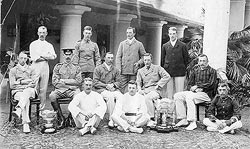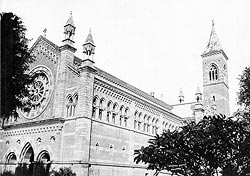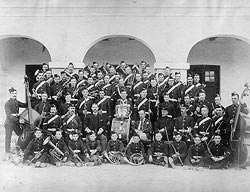The Growth of Indian Nationalism
In 1885 there had been a highly significant political event which was eventually to lead to much internal conflict. This was the first meeting of the Indian National Congress which came into being as a result of the initiative of a retired British official, supported by the Viceroy, to provide a forum for educated Indian feeling opposed to the British concept of government for India and for the development of an all-India view.
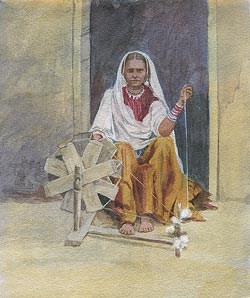 |
| Spinning (Click to enlarge) |
From the beginning, however, there was dissent. Within Congress the majority was motivated by the desire to retain the British method of administration which had been developed so outstandingly by the Indian Civil Service. They accepted that British rule was too strong to be defeated and they sought self rule under a liberal constitution. However a Hindu minority was determined to destroy their British rulers, not to join them. Outside Congress rival Muslim organisations sprang up to oppose the dangerous idea of a single voice for Indian interests, and in 1906 became the Muslim League.
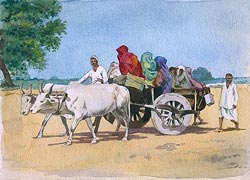 |
| Indian transport. (Click to enlarge) |
In 1909 the British Morley-Minto reforms brought more Indians into the central and provincial legislative councils, including a seat on the Viceroy’s Council, the nearest equivalent in India to a cabinet, and introduced reserved seats and voting on a sectarian basis to protect the outnumbered Muslims. These measures won the active co-operation of the moderate majority in Congress, and a terrorist campaign being waged by Hindus in Bengal was contained. As 1914 and the outbreak of World War One approached, active discontent among the civil population was still confined to a few mainly urban and middle class areas, although there was a groundswell of feeling both in Britain and India that change must come and India must find means of governing herself. The clash of loyalties that this would bring hardly existed for the Indian Army in which the ties of regiment, of comradeship, regardless of caste or creed, and of trust in their officers were still supreme.
1st Bn The Queen’s Royal Regiment Cricket Team 1902, 3 times winners
of The Punjab Commission Cricket Cup, Capt M G Heath, Capt E B Mathew-Lannowe, Capt G H Neale, Capt A M Tringham, |
| Cawnpore Memorial Church, 1915. (Click to enlarge) |
Band of The Queen's Royal Regiment. |
Related
